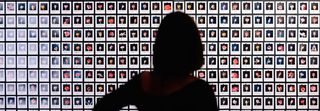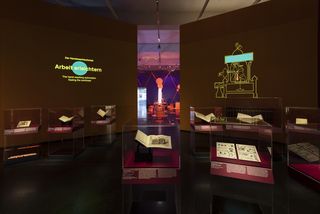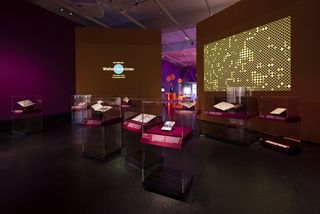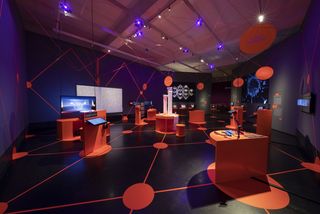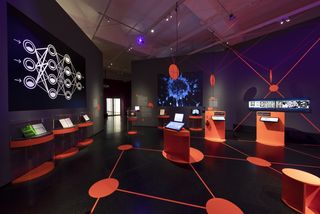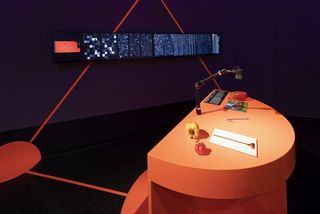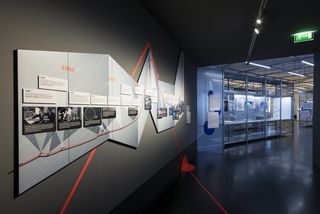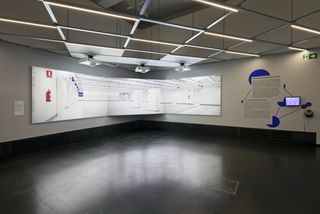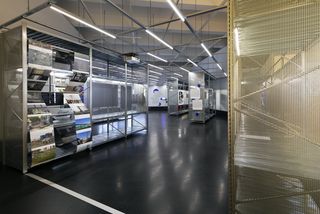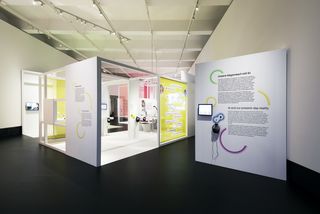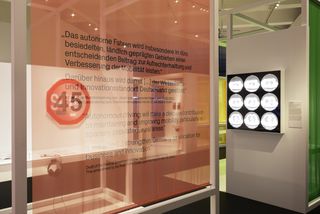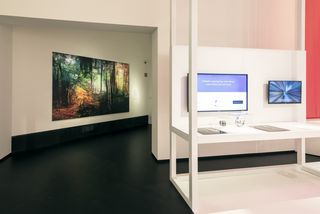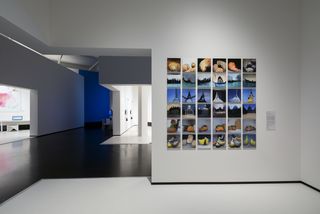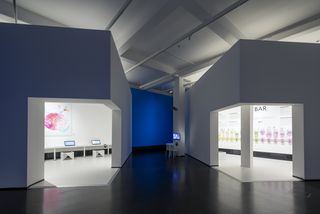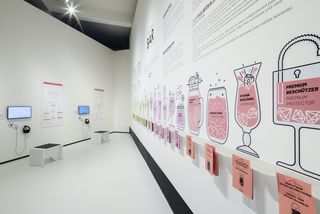Introduction
People have dreamt of intelligent machines for centuries. Today, we talk to Alexa or Siri; tomorrow we may already find ourselves sitting in self-driving cars. But are the highly complex systems that fall under the heading of “AI” really intelligent, in the same way human beings are intelligent?
And if we use those systems, might we one day be in for a rude awakening? Scenarios in which machines take over the world and run amok may still be pure science fiction for now, but it is still disconcerting to see how algorithms can manipulate us, how far big tech’s data-gathering tentacles reach, or the dire consequences of bad AI decisions.
This exhibition addresses not only the risks we run by developing artificial intelligence further, but also the great opportunities associated with this new technology. Using exhibits from cultural history, scientific objects and works of art, it shows how artificial intelligence learns, how it is changing our lives and how we can purposefully use and improve it.
In planning the content of the exhibition, the Deutsches Hygiene-Museum worked with the Barkhausen Institut in Dresden, the Ars Electronica Center in Linz and the Tactical Tech collective in Berlin, among others. The result is an informative, interactive experiential exhibition that brings together everyday life, technology, science and art.
Project Team
Curator and Project Manager: Yasemin Keskintepe
Scientific Co-Curator: Dr Thomas Ramge
Scenography: chezweitz, Berlin
Curatorial Research associate: Dr Anke Woschech
Curatorial Research Project Assistance: Bettina Beer, Clarissa Lütz, Lisa Nikolaus
Conceptual Contribution: Ars Electronica, Linz I Austria; Detlef Weitz, chezweitz, Berlin
Co-operation partners
Tactical TecH Collective: In the last room of the exhibition, the Berlin collective will present a series of exhibits from its ‘Glass Room’ project
Barkhausen Institut: The Barkhausen Institut, Dresden, is researching the trustworthiness of the Internet of Things and is developing an interactive exhibit especially for the exhibition.
Participating artists
Memo Akten, Timo Arnall, M. Eifler, Cheng Guo, Constant Dullaart, Adam Harvey, Mario Klingemann, Lauren Lee McCarthy & David Leonard, Peng! Kollektiv, Anna Ridler, Philipp Schmitt & Mikkel Mikkelsen, Mimi Onuoha
Scientific supervision and consulting
Doreen Böttcher (CeTI Cluster of Excellence, Dresden University of Technology), Dr Simon Egbert (Technical University of Berlin), Prof. Dr Thomas Hänseroth (Dresden University of Technology), Dr Jessica Heesen (University of Tübingen), Prof. Dr Andreas Knie (Berlin Social Science Centre), Prof. Dr Susanne Krasmann (University of Hamburg), Cathérine Lehmann (Technical University of Berlin), Dr Ralf Pulla (Dresden Technical Collections), Dr Rico Radeke (5 G Lab Germany, Dresden University of Technology), Prof. Dr Tilman Santarius (Technical University of Berlin), Prof. Dr Florian A. Schmidt (University of Applied Sciences Dresden), Prof. Dr Dr Matthias Schroeter (Max Planck Institute for Human Cognitive and Brain Sciences, Leipzig), Prof. Dr Stefanie Speidel (National Centre for Tumour Diseases, Dresden)
Exhibition sections
PATTERNS OF AI HISTORY

The ideas and theories we today associate with artificial intelligence have been around since ancient times. The powers of human invention brought forth the first automatons very early on – and not just in Europe. Some, such as the hand-washing automaton built by the polymath Ismail al-Jazari, could perform simple mechanical tasks, while others, such as Wolfgang von Kempelen’s “Chess Player”, were just cunning fakes. Our notions of artificial intelligence are still strongly influenced by these historical fantasies.
Photo: Oliver Killig
Training Room
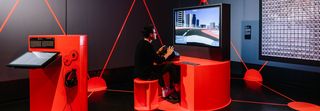
How do machines learn, and how intelligent are they really? In the second exhibition room, you can teach an AI system how to drive a car, using a simulator. But you too are also trained in this room, discovering, for example, how the learning processes undergone by neural networks differ from those in our brains.
Photo: Oliver Killig
AI‘S GLOBAL INFRASTRUCTURE
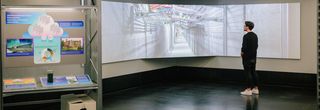
Big data – AI systems can only learn with the help of huge amounts of information. It is only in the last 20 years that it has become possible to provide that information, through rapid advances in hardware and software. The huge, energy-intensive infrastructure required for AI has been built thanks to low-cost, powerful microchips, widespread Internet coverage and high-performance computer centres. The industries that have emerged in that process are now among the most important in the world. But how do things look at companies such as Google, Amazon or Microsoft when it comes to working conditions and ecological responsibility?
Photo: Oliver Killig
AI AND OUR PRESENT-DAY REALITY
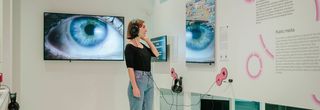
AI systems have long been deployed as everyday helpers and make many processes more efficient – in industry and administration, in medicine and care or providing smart support for people with disabilities. However, AI can also be used as a tool for surveillance and targeted advertising; activities that are increasingly raising questions about the use of personal data. Notably, in product development AI is seen as a magic key that can unlock a constant flow of new consumer needs. Come to your own decision on the fields where you think AI might be helpful, dispensable or dangerous. Find out how widespread AI systems already are and how they affect our lives as individuals and members of society.
Photo: Oliver Killig
AI RE-VISIONS
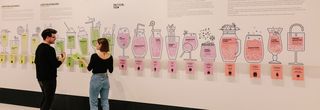
What decisions do we want to leave up to algorithms in the future? Where shall we draw the line? In the final room of the exhibition, experts reveal their thoughts on how AI systems influence politics, ecology, the labour market and the human-machine relationship. In the Tactical Tech collective’s “Glass Room”, we help you navigate the confusing digital jungle. In the process, you will not only find out how AT and the Internet are changing our information society, but also learn how to spot deceptively real deep fakes.
Photo: Oliver Killig
Gallery
Photos: Juliane Eirich
Funded by

Media cooperation
